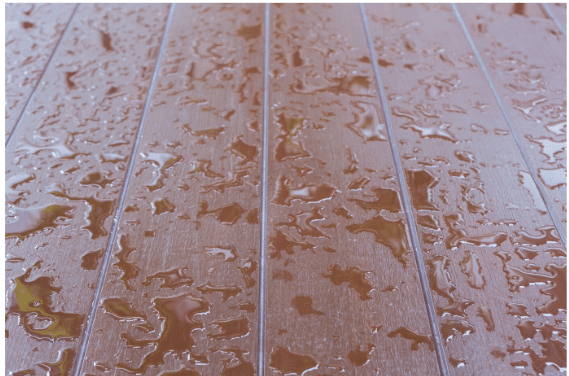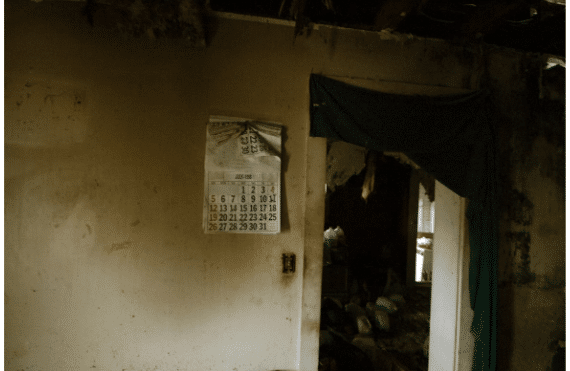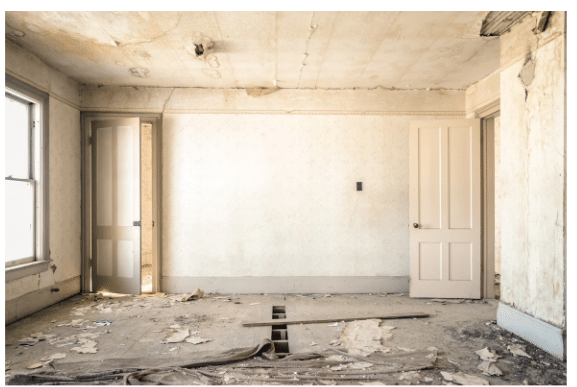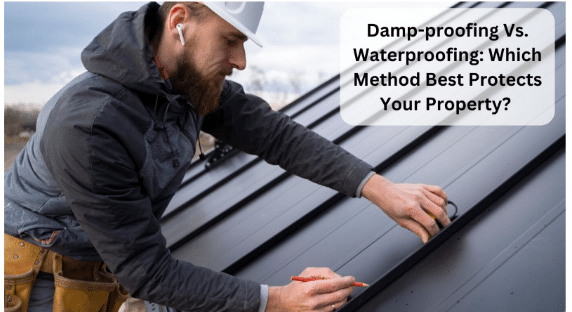You’ll encounter different prevention measures when protecting your property against moisture, humidity, and water damage. Some of these methods may include waterproofing and damp-proofing.
Since these terms often appear together, people tend to use them interchangeably. However, waterproofing and damp-proofing are two different protection methods. In other words, they imply two completely different approaches to securing your home and property against water damage and similar issues.
Damp-proofing refers to prevention measures that stop ground moisture from crawling through your property’s foundation and basement walls. On the other hand, waterproofing prevents all sorts of moisture and water from entering your basement, home, etc.
Damp-proofing prevents moisture from damaging your property, while waterproofing, as the name suggests, protects it from any type of water damage. Thanks to that, you can block soil moisture, reduce hydrostatic pressure, and prevent water from damaging your home, basement, and all other facilities.
Today, we’ll delve deeper into the differences between the two terms to help you make an informed decision on the best, most cost-effective, and safest way to protect your property.
What is Damp-proofing

Damp-proofing is a moisture prevention method that prevents moisture and water vapor from entering the lower levels of buildings, facilities, and basements. It keeps water and moisture from damaging your foundations and walls.
It protects your property by preventing excess moisture from entering your property structures. The damp-proofing method involves using specific water-resistant coatings and moisture-proof materials on the exterior of your structures to prevent water from getting inside.
Damp-proofing stops the movement of moisture, preventing it from entering the interior of your basement and keeping your property structures dry. It protects your foundation walls from water damage, cracks, and other issues.
So, what would it cost to waterproof basement? Well, we first need to go over the basics to get the full picture.
Pros and Cons of Damp-proofing
Let’s delve deeper into the advantages and disadvantages of damp-proofing to protect your property and structures.
Pros:
- Handles odors and unpleasant smells caused by dampness and mold – water and moisture buildup lead to mold, creating unpleasant odors and musty smells in buildings like basements, cellars, etc. Damp-proofing can help you treat these smells and remediate mold.
- Allows you to keep moisture under control – damp-proofing techniques prevent moisture buildup inside your structures, buildings, and basements by regulating and controlling the moisture buildup across your property.
- Application simplicity – damp-proofing is a straightforward process involving simple tools, materials, and techniques that property owners can handle on their own.
Cons:
- Not suitable for properties located in specific areas – if your property is stationed in heavy rainfall areas or regions exposed to poor soil drainage, damp-proofing won’t be enough to protect your buildings and structures against water damage.
- Prone to physical damage – damp-proofing treatment involves using specific materials and coatings that can get damaged in certain environmental conditions or during regular use or construction.
- Security concerns – damp-proofing treatment can prevent some forms of water from entering your buildings. However, it can stop the flow or movement of water in areas with high water tables.
As effective as it is, it can’t withstand all the pressure from flowing or standing water, exposing your property to water damage and other associated issues.
What is Waterproofing

Waterproofing is a protective treatment method that prevents flowing and static water from penetrating buildings, structures, and solid surfaces on your property. It’s one of the most reliable ways to prevent liquid water from damaging your property.
Waterproofing can do something that damp-proofing can’t – withstand hydrostatic pressure. Additionally, waterproofing can protect the interior and the exterior of the buildings on your property.
Thanks to that, a waterproofing system can provide all the protection you need to ensure that no liquid water can enter your home, basement, or other structures on your property.
Pros and Cons of Waterproofing
Here’s a brief overview of the advantages and disadvantages of waterproofing to help you make an informed decision.
Pros:
- Full protection against water damage – damp-proofing treatment can prevent moisture build-ups in your home, basement, and other buildings on your property. Conversely, waterproofing provides full-time water damage protection, keeping your property resilient to all water-related issues.
- Incredible resilience and durability – unlike damp-proofing, waterproofing treatment involves the use of specialized protecting layers that are highly durable, reducing the need for costly upgrades and foundation repairs.
- Waterproofing can increase property value – waterproofed properties offer higher property value due to ensuring the overall protection and security of all the buildings and structures. Thanks to that, waterproofing can potentially increase the value of your property.
Cons:
- Complex Installation – waterproofing requires you to hire professionals to install the waterproofing systems on your property. The installation process can be complex, so we recommend leaving it to the waterproofing experts to ensure everything goes according to plan.
- Additional Complications – if your property requires waterproofing, you’ll probably need to move out of your home to let the experts facilitate the necessary interventions. That could disrupt your everyday workflow and daily activities. In addition, waterproofing your entire property may be a big hit for your budget.
- Constant Maintenance – property waterproofing involves applying a surface protective layer that might be prone to regular wear and tear. Therefore, you’ll need to inspect it occasionally to ensure there are no signs of damage.
If you notice any issues, you must handle them instantly to prevent greater damage, followed by costly repairs.
Damp-proofing vs. waterproofing – Which method should you pick?

If your property is exposed to moisture now and then, damp-proofing could be enough to handle your water problems and protect your property. However, waterproofing might be a more suitable option if your property receives heavy rainfalls and increased flowing or standing water.
We recommend waterproofing to protect entirely against moisture, water damage, and hydrostatic pressure. It completely blocks the water buildup on your property by creating an impenetrable barrier that blocks flowing or standing water from entering your buildings, structures, etc.
Basement waterproofing costs depend on numerous factors, such as the size of your basement, its condition, and more. In addition, you also need to specify whether you need interior or exterior basement waterproofing, as these are two different types of waterproofing services.
The best solution is to contact the waterproofing experts to schedule a comprehensive inspection of your basement and receive your quote based on facts so you can make an informed, budget-friendly decision.
Conclusion
We recommend waterproofing to protect your property against water damage and other related issues. It’s a far superior protection and prevention method to damp-proofing. However, don’t cross-damp-proofing off the list just yet.
Both methods provide longevity, versatility, and enhanced water damage protection with slight differences. Damp-proofing prevents moisture intrusion while waterproofing protects your property from water-related damage.
In addition, waterproofing provides additional protection against hydrostatic pressure and can increase the value of your property. Therefore, it’s one of the most purposeful, cost-effective, long-term investment options.


